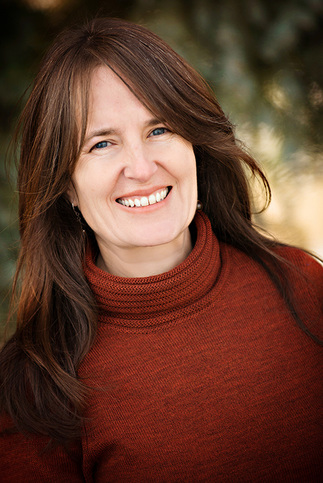|
10/17/2016 3 Comments SPOTLIGHT: Elizabeth STAHL Nobody becomes a therapist without some history of psychological distress. I come from a fractured family that lacked strong community ties. For me writing and composing this newsletter is a way to work towards building community by exploring the relationships I have come across while cultivating a psychotherapy practice in Boulder. I would like to give attention to the people and groups that I have met and continue to meet along the way. Many of you already know each other, and many do not. My hope is that this newsletter becomes a space for local therapists to connect with and support each other. This section of the newsletter will feature individuals that offer therapeutic perspectives. For this first newsletter the spotlight is on me, the creator of this forum. I have been in therapy as a client, since I was 16. I became a therapist through being a client. My first career was as a professional visual artist, a sculptor. I have a lot of familiarity with the creative process. As an artist I moved to New York, where I began psychoanalysis (as a client) and discovered group therapy (as a client). After years of analysis and being a group member I decided to switch careers, got married, gave birth to two kids, eventually moved to Boulder, and enrolled in the Transpersonal Counseling Program at Naropa University which I graduated from in 2013. I began my professional training as a therapist at the Center for Modern Psychoanalysis in New York. Modern Psychoanalysis is my theoretical foundation as a therapist, the first professional language that I learned. Like any first language it has become elemental in how I conceptualize my role as a therapist. I identified as an artist before becoming a therapist and that shaped my attitude towards theories and communities. As an artist you are expected to develop your own way of looking at the world. In Art History you are taught about movements, how one way of seeing can dominate and then splinter into several ways of seeing, recollect and then go to seed and get re-interpreted over and over again. In the art world it is taken for granted that no two artists see exactly alike, differences are valued over similarities and rebellion is encouraged. The idea that one theory dominates? Frankly, in the art world that would make things boring. Part of what makes the community of the art world exciting is the multitude of perspectives and getting to watch how particular artists interact and develop over time. In the art world there are galleries, museums and other venues where artists can go to see what other artists are up to. That’s how I view this newsletter: as a place to discover what others are up to and to provide resources for further education and peer support. I see my role as a curator with an insatiable curiosity about how people become therapists and I am dedicated to representing a multitude of therapeutic perspectives and cultivating a community that encourages dialogue. To read more by Elizabeth click on her name to go to her blog.
3 Comments
10/27/2016 06:30:54 am
Hi Elizabeth
Reply
10/31/2016 07:17:12 am
Thanks for getting this going, Elizabeth. I think this fills one of the holes in the Boulder area. There are so many therapists and therapeutic approaches in the area and there has never been one place where one can express their views, give and receive feedback, and stretch a bit. Bravo!
Reply
Marlene Carvalho
4/22/2017 07:07:12 am
I love your vision for this site. How we weave our histories with our creativity is a potent force for community. Different perspectives, allowing the voices of our community to be heard, offers the opportunity for us to feel and know the full range of our humanness -- never accomplished by one way, one method, one worldview. We are born collaborators! Blessings on your intention.
Reply
Leave a Reply. |
SPOTLIGHTWriting about therapeutic relationships Archives
September 2018
Categories |
 RSS Feed
RSS Feed